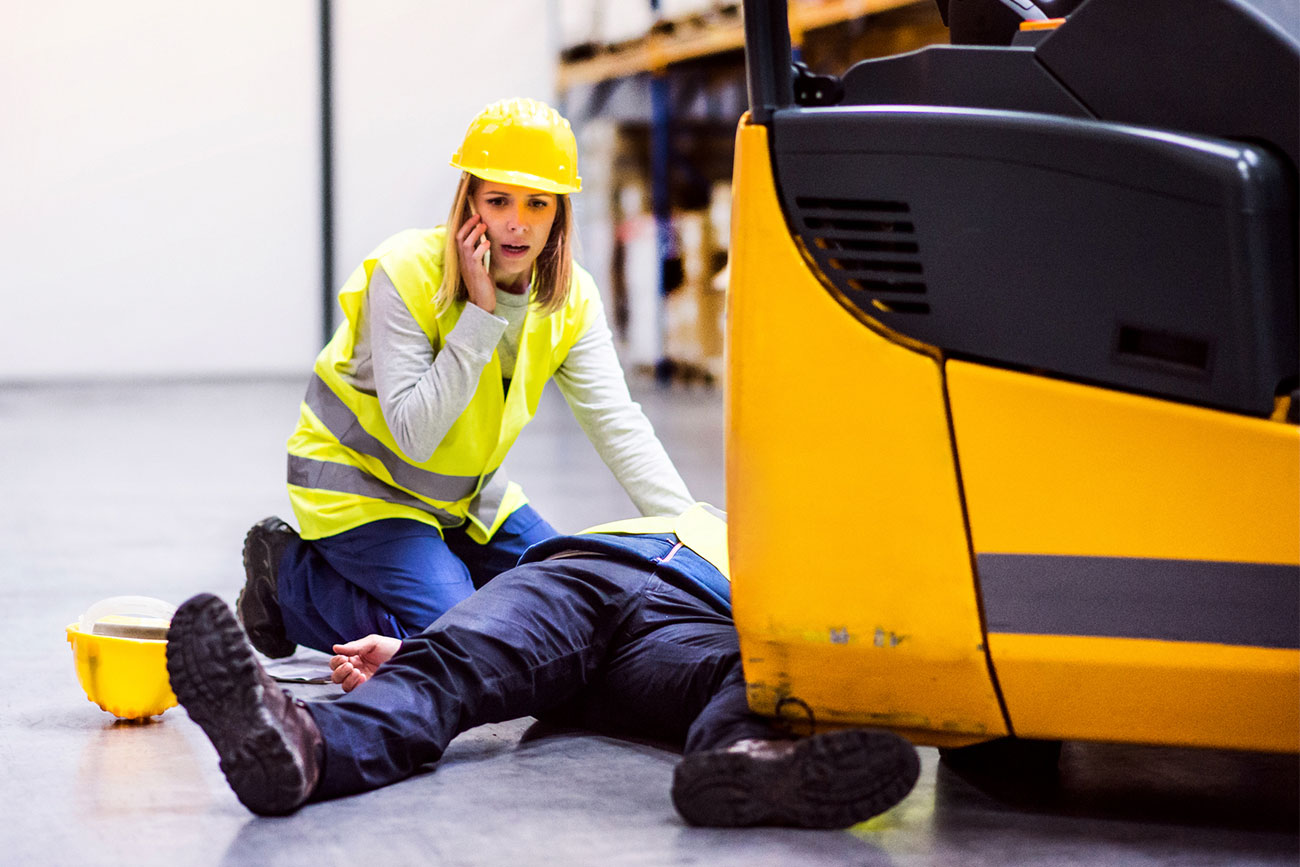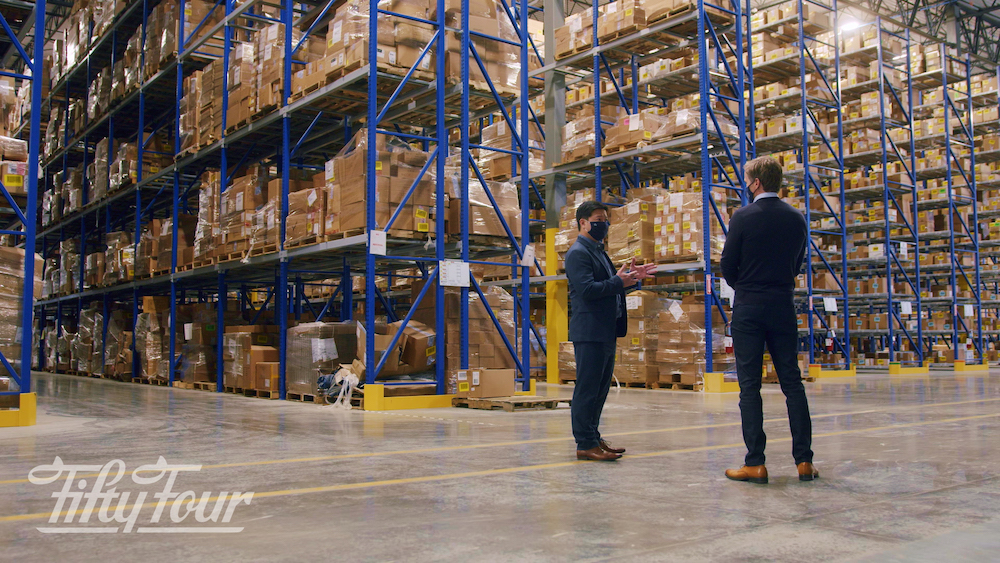
As the industry comes off another successful National Forklift Safety Day, it’s imperative to reinforce the reasons why this event, sponsored by the Industrial Truck Association, is so important. Every single person in the material handling and distribution center warehouse industry should live by the mandate that “Everyone goes home at the end of their shift.” Industries that use forklifts have some fairly horrible stats for safety, so it’s up to each one of us to practice and reinforce safety as the number one priority at our job sites, whether that’s an outside construction site or an indoors warehouse.
Although forklifts come to mind when we talk about safety in the warehouse, there are many areas where workers – and visitors – can get hurt. It’s certainly not confined to our powered equipment. Let’s take a look at some of the more common ways injuries – and fatalities – happen in the work space and what today’s technology can do to help us be more safe.
Overexertion
Believe it or not, these non-impact injuries are right at the top for most work-related injuries. Our material handling and DC warehouse workers are constantly asked to lift and carry a variety of objects with a variety of weights. In addition, repetitive motion causes stress on muscles and joints – even when heavy lifting isn’t part of the equation.
Consider this: John is 45 and has been working in a warehouse most of his life. Currently, his job is to spend 8 hours a day bending down to pick 25-lb. boxes off of a pallet, setting the box on his work station, labeling the box and then bending down once again to put the box on another pallet. You can imagine what John’s back, legs, arms and shoulders are going through. One morning, John wakes up and cannot get out of bed. His wife takes him to the doctor, who diagnoses John with one or more of a host of repetitive motion injuries, including carpal tunnel syndrome, bursitis, tendonitis, epicondylitis, ganglion cyst and/or tenosynovitis.
All of these awful-sounding injuries cause extreme pain and temporary – or permanent – disability. You can take a leap and figure out what this means to you: one less reliable worker in an ongoing shortage of reliable employees, plus the possibility of higher premiums for your company’s workers comp insurance. So what’s the fix in today’s warehouse world?

The Fix: Automation and Robotics. We aren’t asking you to convert your entire material handling operation to a human-less automation of robots taking care of every task. Moving in small steps and slowly integrating automation and robotics makes a lot more sense. This is something that most of us need professional help to implement.
But let’s look at how we could help reliable John with his daily duties. Suppose there is a picker robot who puts the box on a conveyor belt. It moves to John, who affixes the proper label. It continues on its way to another automated station, where it is efficiently loaded onto an outgoing pallet (which is then moved by forklift). There are many more possibilities in this scenario, including integrating a warehouse management system to reduce human error and injuries.
Slips, Trips and Falls
No story about material handling and DC warehouse safety would be complete without the old trio of slips, trips and falls. This category comes in right behind overexertion and repetitive motion injuries. Why are workers in this industry so prone to slipping, tripping and falling? Because they are human and humans make mistakes. Luckily, this category doesn’t see as many fatalities as others, but any workplace injury is a negative one.
Slips (when contact is lost between the footwear and the surface) can happen because there’s something spilled on the floor, like oil. Leaky equipment, anyone? Trips happen when the foot comes into unexpected contact with something and you fall. This can be due to poor lighting, clutter, an uneven surface and more. Obviously, falls happen when you slip or trip or worse, underestimate your footing when you are on aerial equipment or fall from any height.
Consider this: Poor old John is finally back to work after spending 3 months recuperating from his repetitive motion injury. John’s no longer spending 8 hours a day labeling boxes. He has graduated to being an inventory clerk. As part of his job, he counts – and accounts – for every piece that comes in the warehouse. Unfortunately, as John walks toward the back of the truck, another employee calls his name. John looks back and fails to successfully negotiate the space between the dock and the truck. Back to the doctor goes John.
The Fix: Dock equipment built for today’s emphasis on safety. John’s boss is installing a dock leveler the next day. It’s too late for John, but the rest of his workers, the truck drivers and the product will be safer going forward. In today’s material handling and DC warehouse world, protecting your workers – and your dock – will be a good investment.
Coming Into Contact with a Moving or Stationary Object
Number three on our list of potential material handling and DC warehouse hazards is a doozy. Nobody wants to think about what happens to a worker when a moving object, such as a forklift, hits them. Shifting objects also have the potential to cause great harm to workers by compressing or crushing them in between to objects. And forklifts and shifting objects are pretty common in a warehouse or other material handling environment.
Consider this: John’s back from his broken leg due to his fall. Unfortunately, even though John’s boss has made some improvements to the warehouse, he has not taken advantage of radio frequency identification (RFID) sensors, which among other features can generate a safety warning if a worker or the equipment comes too close. This technology is not expensive and it’s fairly easy to implement, so John’s boss has no excuse when John rounds a corner in the dark and runs into a forklift.
The Fix: RFID tags on employees and machinery are just an illustration of small steps that can lead to better safety in your material handling and DC warehouse space. Don’t be John’s boss – find out what technology is out there that can help you make safety the priority it should be.
Remember that good old established practices should not be discarded just because your material handling operation is “smarter” and more innovative. Tried and true methods include:
- Regular safety meetings
- Safety awards for days without injury
- Anonymous reporting
When your employees feel like you care about their safety, you’ll be rewarded with a more loyal workforce.
Safety First, Always
At 54 Intralogistics, we have experts who can give you a free consultation on how you can not only increase productivity and efficiency, but how you can move safety into the position it belongs: upfront and center. Contact us today to find out how we can help you find the MaxOP of your warehouse.
